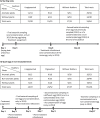Nest Material Shapes Eggs Bacterial Environment
- PMID: 26871451
- PMCID: PMC4752222
- DOI: 10.1371/journal.pone.0148894
Nest Material Shapes Eggs Bacterial Environment
Abstract
Selective pressures imposed by pathogenic microorganisms to embryos have selected in hosts for a battery of antimicrobial lines of defenses that includes physical and chemical barriers. Due to the antimicrobial properties of volatile compounds of green plants and of chemicals of feather degrading bacteria, the use of aromatic plants and feathers for nest building has been suggested as one of these barriers. However, experimental evidence suggesting such effects is scarce in the literature. During two consecutive years, we explored experimentally the effects of these nest materials on loads of different groups of bacteria (mesophilic bacteria, Enterobacteriaceae, Staphylococcus and Enterococcus) of eggshells in nests of spotless starlings (Sturnus unicolor) at the beginning and at the end of the incubation period. This was also explored in artificial nests without incubation activity. We also experimentally increased bacterial density of eggs in natural and artificial nests and explored the effects of nest lining treatments on eggshell bacterial load. Support for the hypothetical antimicrobial function of nest materials was mainly detected for the year and location with larger average values of eggshell bacterial density. The beneficial effects of feathers and plants were more easily detected in artificial nests with no incubation activity, suggesting an active role of incubation against bacterial colonization of eggshells. Pigmented and unpigmented feathers reduced eggshell bacterial load in starling nests and artificial nest boxes. Results from artificial nests allowed us to discuss and discard alternative scenarios explaining the detected association, particularly those related to the possible sexual role of feathers and aromatic plants in starling nests. All these results considered together confirm the antimicrobial functionality mainly of feathers but also of plants used as nest materials, and highlight the importance of temporally and geographically environmental variation associated with risk of bacterial proliferation determining the strength of such effects. Because of costs associated to nest building, birds should adjust nest building effort to expected bacterial environments during incubation, a prediction that should be further explored.
Conflict of interest statement
Figures





References
-
- Clark L, Mason JR. Use of nest material as insecticidal and anti-pathogenic agents by the European Starling. Oecologia. 1985; 67: 169–176. - PubMed
-
- Tomás G, Merino S, Moreno J, Morales J. Consequences of nest reuse for parasite burden and female health and condition in blue tits, Cyanistes caeruleus. Anim Behav. 2007; 73: 805–814.
-
- Soler JJ, Martín-Vivaldi M, Ruiz-Rodríguez M, Valdivia E, Martín-Platero AM, Martínez-Bueno M, et al. Symbiotic association between hoopoes and antibiotic-producing bacteria that live in their uropygial gland. Funct Ecol. 2008; 22: 864–871.
-
- Lafuma L, Lambrechts MM, Raymond M. Aromatic plants in bird nests as a protection against blood-sucking flying insects? Behav Process. 2001; 56: 113–120. - PubMed
-
- Cantarero A, López-Arrabé J, Rodríguez-García V, González-Braojos S, Ruiz-De-Castañeda R, Redondo AJ, et al. Factors affecting the presence and abundance of generalist ectoparasites in nests of three sympatric hole-mesting bird species. Acta Ornithol. 2013; 48: 39–54.
Publication types
MeSH terms
LinkOut - more resources
Full Text Sources
Other Literature Sources

